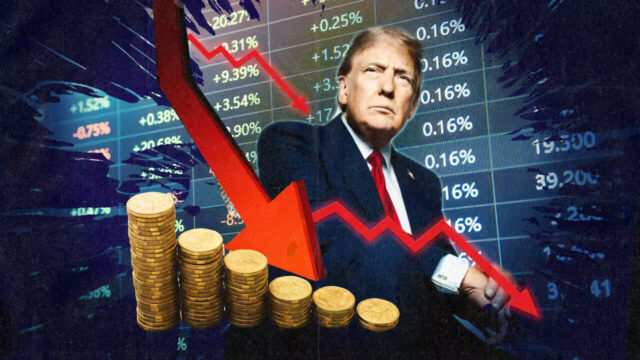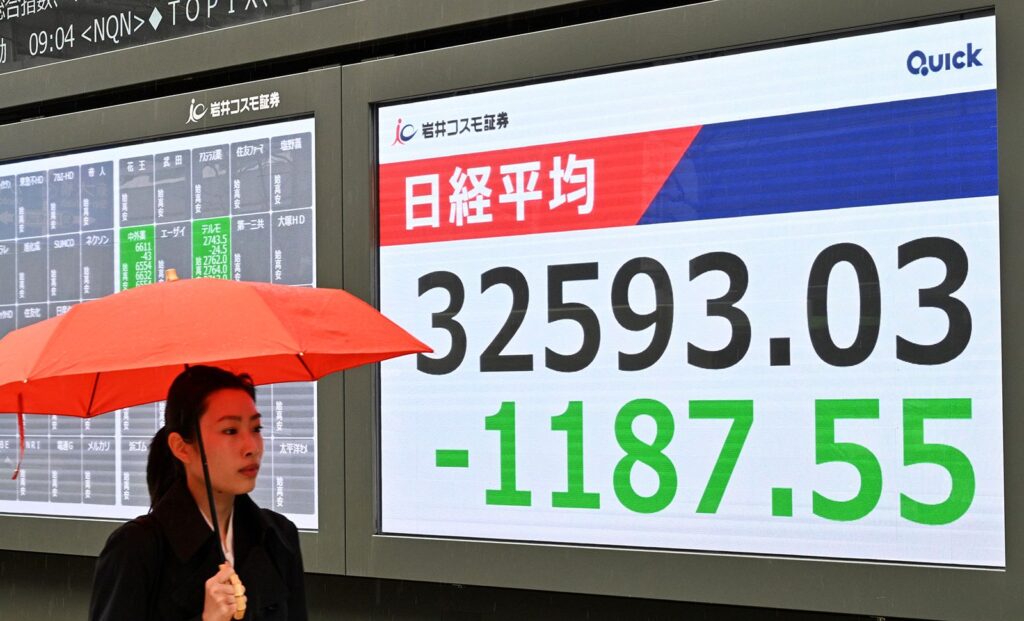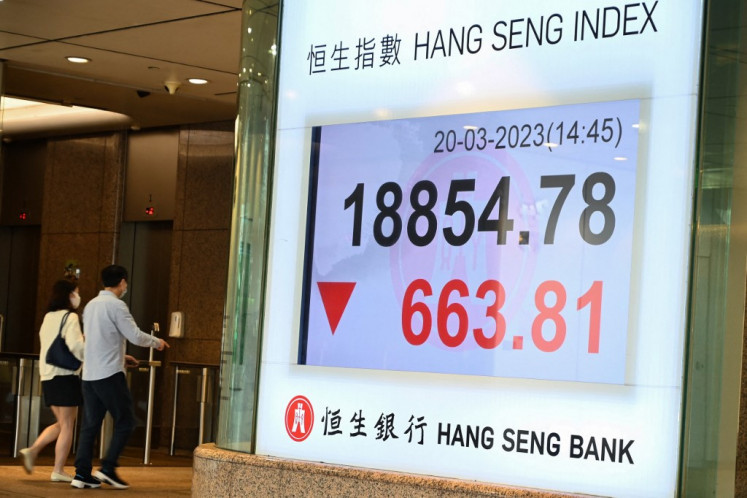
Global stock markets experienced a sharp and sudden decline today, spurred by President Trump’s reaffirmation of his aggressive stance on tariffs, which sent shockwaves through international trading floors. This triggered a series of dramatic losses across major Asian markets, including Japan, South Korea, and Taiwan, with several exchanges halting trading to prevent further panic.
Japan’s Nikkei 225 Faces Sharp Drop
In Japan, the Nikkei 225 index plummeted by a staggering 8%, a sharp move that triggered a 10-minute trading halt, a measure used to calm volatility in extreme market conditions. Similarly, the Topix index fell 8.6%, reflecting widespread panic across the market. This market decline in Japan came in response to Trump’s tariff comments, which fueled investor concerns about escalating trade tensions, particularly between the U.S. and China, potentially undermining global economic stability.

Taiwan’s Market Takes a Hit
In Taiwan, the Taiex index suffered an even steeper plunge, diving by 9.8%, forcing a suspension of trading. Key Taiwanese stocks, such as TSMC (Taiwan Semiconductor Manufacturing Company) and Foxconn, two major players in the technology sector, saw their shares drop by approximately 10%. The shockwaves were felt strongly in Taiwan, where the tech sector is a cornerstone of the national economy, making the losses particularly painful for investors.

South Korea and Australia Follow Suit
Across the sea in South Korea, the Kospi index fell by 4.8%, mirroring the broader regional trend of sharp declines. In Australia, the ASX 200 dropped by 6%, with the nation’s markets also reeling from the heightened uncertainty created by Trump’s tariff rhetoric. These drops were part of a broader market-wide response to fears that the ongoing trade disputes would hurt global supply chains, exacerbate inflation, and ultimately slow down economic growth.
U.S. Futures Signal Further Trouble
The negative sentiment quickly spread to U.S. markets as well, with Dow futures falling by 2.57% and Nasdaq futures tumbling 4.2%. Investors have become increasingly worried about the long-term effects of an escalating trade war, especially given the looming tariff hikes that could affect various sectors, including technology, agriculture, and manufacturing. These global ripple effects suggest that the tensions over trade policy may be far from over.
Analysts Warn of “Black Monday” Risks
As stock markets continued to slide, analysts began warning of a potential “Black Monday” scenario, evoking memories of the infamous 1987 stock market crash. The term refers to the catastrophic drop in U.S. stocks that occurred on October 19, 1987, when markets lost over 20% of their value in a single day. While there’s no immediate sign of such a drastic move today, the sharp declines in global markets have raised concerns about an impending market correction.
The use of circuit breakers, which are automated trading halts to prevent markets from spiraling further downward, was reminiscent of the COVID-19 market panic in March 2020. During that time, global stock markets also fell sharply due to the uncertainty surrounding the pandemic, triggering multiple circuit breaker interventions across the world.
What’s Behind the Sharp Declines?
The triggering of circuit breakers and the widespread market drops come on the back of increasing geopolitical uncertainty. President Trump’s recent remarks about tariffs have reignited fears about a trade war, especially with China, which could lead to a slowdown in global trade and disrupt key supply chains.
Markets have been sensitive to trade issues for several years, with tariff increases between the U.S. and China contributing to a fragile global economic environment. Investors are worried that the renewed tensions could further depress business confidence and disrupt investment in key sectors, leading to slower global economic growth.
The Road Ahead: What Can Investors Expect?
While today’s market downturn was significant, it remains to be seen whether the damage will extend beyond the immediate aftermath of the news. Investors are watching closely for signs of recovery, but analysts caution that the situation is far from stable. Ongoing trade tensions, coupled with concerns about inflation, rising interest rates, and geopolitical risks, all suggest that the road ahead could be volatile.
In the short term, global markets are likely to remain sensitive to political and economic developments. The uncertainty surrounding Trump’s tariff stance and the potential for escalation in trade disputes could continue to weigh on investor sentiment, keeping markets in a heightened state of anxiety.
As the situation develops, traders and investors will need to stay alert, watching closely for further government interventions and policy changes that could either ease tensions or exacerbate the global economic strain. With market volatility expected to continue, it is important for market participants to remain cautious in navigating this uncertain terrain.
Conclusion
Today’s market volatility, punctuated by the triggering of circuit breakers in Japan and sharp declines across major global indices, highlights the ongoing vulnerability of financial markets to political and economic developments. While the sharp losses may be temporary, the risk of further market disruptions remains, especially in light of ongoing tariff tensions. Investors should brace themselves for continued uncertainty as the situation unfolds.



